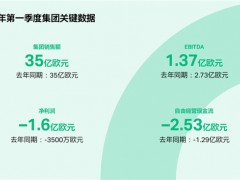據全球能源新聞網5月8日報道,被稱為“石油巨頭”的大型公司的已探明油氣儲量正在以驚人的速度下降,因為產量沒有完全被新發現所取代。根據雷斯塔能源(Rystad Energy)的一項分析顯示,去年石油巨頭的地下儲量減少了15%,剩余的儲量將在不到15年內耗盡——除非這些公司能盡快發現更多的商業儲量。
隨著勘探投資的縮減和成功率的下降,這項任務變得越來越具有挑戰性。探明儲量的下降可能會給石油巨頭(埃克森美孚、英國石油、殼牌、雪佛龍、道達爾和埃尼)在未來幾年保持穩定的生產水平帶來嚴重挑戰。這將導致收入減少,并對這些公司能源轉型計劃的融資構成重大威脅。
石油巨頭發現其已探明儲量在2020年減少了130億桶油當量,因為這些公司承擔了巨額減值支出,而且今年的勘探也沒有取得良好的開端。全球油氣行業第一季度的發現量總計為12億桶油當量,為七年來的最低水平,因為排名靠前的勘探遠景區未能開采,而成功的初探油田只只獲得了中等規模的發現。
新冠疫情導致的原油需求和價格暴跌,以及對資本紀律的日益關注,導致了投資削減,這可能會加劇許多大型運營商在努力提高已探明儲量時面臨的挑戰。即使對于越來越關注能源轉型的歐洲巨頭來說,商業模式也將繼續以油氣銷售為主。
雷斯塔能源負責上游研究的副總裁Parul Chopra表示,石油巨頭未來創收的能力將繼續取決于這些公司可供出售的石油和天然氣的量。如果儲量不足以維持生產水平,公司將發現難以為昂貴的能源轉型項目提供資金,從而導致其清潔能源計劃放緩。
?2020年,埃克森美孚的探明儲量比2019年減少了70億桶油當量,即30%。這主要是由于加拿大油砂和美國頁巖氣儲量的減少。埃克森美孚在加拿大的液體探明儲量從48億桶石油調整為不到9億桶,而與瀝青相關的基爾和冷湖油砂項目的儲量從38億桶減少到不到1億桶。此外,美國一些頁巖油氣的液態儲量減少了10億桶。
?去年,殼牌已探明儲量下降20%,至90億桶油當量。液態儲量占總儲量減少的三分之一,主要是美國和南美的項目,以及其它地區缺乏新發現的儲量。天然氣儲量占減少量的三分之二,其中澳大利亞項目調整為6億桶油當量。
?盡管雪佛龍通過收購來寶能源(Noble Energy)增加了約20億桶油當量的已探明儲量,但由于減值,雪佛龍仍遭受了儲量損失。
?英國石油(BP)的探明總儲量從2019年的190億桶油當量下降到2020年的180億桶油當量,主要原因是出售現有資產和缺乏重大新發現。
?道達爾和埃尼集團在過去十年中避免了探明儲量的任何減少。
作為衡量一家公司勘探業績指標的新發現的儲量表明,石油巨頭在維持儲量基礎和向現有客戶供應石油方面面臨巨大挑戰。在過去的五年里,這六家石油巨頭通過新發現的儲量僅替代了45%的產量。埃克森美孚的表現好于同行,由于圭亞那近海Stabroek區塊發現了90億桶油當量,增加了70%以上的已開采儲量。
去年,道達爾在圭亞那-蘇里南盆地的勘探也取得了重大成功,而埃尼則得益于在非洲的成功。另一方面,雪佛龍和殼牌一直在努力登記新發現的儲量。從2016年到2020年,雪佛龍僅替換了15%的產量,而殼牌則替換了27%。
郝芬 譯自 全球能源新聞網
原文如下:
OIL AND GAS PROVEN RESERVES OF MAJOR COMPANIES ARE FALLING AT ALARMING RATE
The proven oil and gas reserves of the group of major companies called “Big Oil” are falling at an alarming rate, as produced volumes are not being fully replaced with new discoveries. A Rystad Energy analysis shows that Big Oil lost 15% of its stock levels in the ground last year, with remaining reserves set to run out in less than 15 years – unless the group makes more commercial discoveries, and fast.
The task is becoming more and more challenging as investments in exploration shrink and success rates slump. The declining proven reserves could create serious challenges for Big Oil (ExxonMobil, BP, Shell, Chevron, Total and Eni) to maintain stable production levels in coming years. This would in turn cause revenue to dwindle and pose a major threat to the financing of the group’s energy transition plans.
Big Oil saw its proven reserves drop by 13 billion barrels of oil equivalent (boe) in 2020 as the companies took large impairment charges, and this year’s exploration has not come off to a great start either. The industry’s global first-quarter discovered volumes totaled 1.2 billion boe, the lowest in seven years, as high-ranked prospects failed to deliver and successful wildcats only yielded modest-sized finds.
The collapse in crude oil demand and prices due to the Covid-19 pandemic and an increased focus on capital discipline has led to investment cuts that could aggravate the challenge of many major operators as they strive to boost their proven reserves. Even for European majors, which are increasingly focusing on the energy transition, business models will continue to be dominated by the sale of oil and gas.
“The ability of Big Oil to generate future revenues will continue to depend on the volume of oil and gas the companies have at their disposal to sell. If reserves are not high enough to sustain production levels, companies will find it difficult to fund expensive energy transition projects, resulting in a slowdown of their clean energy plans,“ says Parul Chopra, vice president of upstream research at Rystad Energy.
? ExxonMobil’s proven reserves shrank by 7 billion boe in 2020, or 30%, from 2019 levels. This was mainly due to reductions in Canadian oil sands and US shale gas properties. ExxonMobil’s proven reserves of liquids in Canada were revised from 4.8 billion barrels of oil to less than 900 million barrels, while bitumen-related reserves for the Kearl and Cold Lake oil sands projects were slashed from 3.8 billion barrels to less than 100 million barrels. In addition, liquid reserves related to some US shale plays have been reduced by 1 billion barrels.
? Shell saw its proven reserves fall by 20% to 9 billion boe last year. Liquid reserves accounted for one-third of total reductions and were mostly down to US and South American projects, and a lack of new discoveries elsewhere. Gas reserves accounted for two-thirds of the reductions, led by a 600 million boe revision in Australian projects.
? Chevron suffered reserve losses due to impairments, despite the addition of around 2 billion boe of proven reserves to its inventory through the acquisition of Noble Energy.
? BP saw its total proven reserves drop from 19 billion boe in 2019 to 18 billion boe in 2020, mainly due to the sale of existing assets and a lack of major new discoveries.
? Total and Eni have been able to avoid any reduction in proven reserves over the past decade.
New discovered volumes – a measurement of a company’s exploration performance – illustrates the daunting challenge faced by oil majors to maintain their reserves base and supply existing customers. Over the past five years, the six majors have replaced only 45% of their production through reserves from new discoveries. ExxonMobil fared better than its peers, adding more than 70% of the produced reserves thanks to 9 billion boe of discovered volumes in the offshore Stabroek Block in Guyana.
Total also enjoyed significant exploration success last year in the Guyana-Suriname basin, while Eni did well thanks to success in Africa. Chevron and Shell, on the other hand, have struggled to register new discovered volumes. Chevron managed to replace only 15% of its produced volumes from 2016 through 2020, while Shell replaced 27%.
免責聲明:本網轉載自其它媒體的文章,目的在于弘揚石化精神,傳遞更多石化信息,并不代表本網贊同其觀點和對其真實性負責,在此我們謹向原作者和原媒體致以敬意。如果您認為本站文章侵犯了您的版權,請與我們聯系,我們將第一時間刪除。







